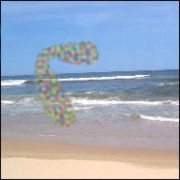
An analgesic drug, also called simply an analgesic, analgaesic, pain reliever, or painkiller, is any member of the group of drugs used to achieve relief from pain. Analgesics are conceptually distinct from anesthetics, which temporarily reduce, and in some instances eliminate, sensation, although analgesia and anesthesia are neurophysiologically overlapping and thus various drugs have both analgesic and anesthetic effects.

Migraine is a common neurological disorder characterized by recurrent headaches. Typically, the associated headache affects one side of the head, is pulsating in nature, may be moderate to severe in intensity, and could last from a few hours to three days. Non-headache symptoms may include nausea, vomiting, and sensitivity to light, sound, or smell. The pain is generally made worse by physical activity during an attack, although regular physical exercise may prevent future attacks. Up to one-third of people affected have aura: typically, it is a short period of visual disturbance that signals that the headache will soon occur. Occasionally, aura can occur with little or no headache following, but not everyone has this symptom.

Headache, also known as cephalalgia, is the symptom of pain in the face, head, or neck. It can occur as a migraine, tension-type headache, or cluster headache. There is an increased risk of depression in those with severe headaches.

Cluster headache (CH) is a neurological disorder characterized by recurrent severe headaches on one side of the head, typically around the eye(s). There is often accompanying eye watering, nasal congestion, or swelling around the eye on the affected side. These symptoms typically last 15 minutes to 3 hours. Attacks often occur in clusters which typically last for weeks or months and occasionally more than a year.

Tension headache, also known as stress headache, or tension-type headache (TTH), is the most common type of primary headache. The pain can radiate from the lower back of the head, the neck, eyes or other muscle groups in the body typically affecting both sides of the head. Tension-type headaches account for nearly 90% of all headaches.

Pain management is an aspect of medicine and health care involving relief of pain in various dimensions, from acute and simple to chronic and challenging. Most physicians and other health professionals provide some pain control in the normal course of their practice, and for the more complex instances of pain, they also call on additional help from a specific medical specialty devoted to pain, which is called pain medicine.

Opioids are substances that act on opioid receptors to produce morphine-like effects. Medically they are primarily used for pain relief, including anesthesia. Other medical uses include suppression of diarrhea, replacement therapy for opioid use disorder, reversing opioid overdose, and suppressing cough. Extremely potent opioids such as carfentanil are approved only for veterinary use. Opioids are also frequently used non-medically for their euphoric effects or to prevent withdrawal. Opioids can cause death and have been used for executions in the United States.

A cold-stimulus headache, colloquially known as an ice-cream headache or brain freeze, is a form of brief pain or headache commonly associated with consumption of cold beverages or foods such as ice cream, popsicles, and snow cones. It is caused by a cold substance touching the roof of the mouth, and is believed to result from a nerve response causing rapid constriction and swelling of blood vessels, "referring" pain from the roof of the mouth to the head. The rate of intake for cold foods has been studied as a contributing factor. It can also occur during a sudden exposure of unprotected head to cold temperatures, such as by diving into cold water. A cold-stimulus headache is distinct from dentin hypersensitivity, a type of dental pain that can occur under similar circumstances.
Manual therapy, or manipulative therapy, is a physical treatment primarily used by physical therapists, physiotherapists, occupational therapists to treat musculoskeletal pain and disability; it mostly includes kneading and manipulation of muscles, joint mobilization and joint manipulation. It is also used by Rolfers, massage therapists, athletic trainers, osteopaths, and physicians.
Hyperacusis is the increased sensitivity to sound and a low tolerance for environmental noise. Definitions of hyperacusis can vary significantly; it can refer to normal noises being perceived as: loud, annoying, painful, fear-inducing, or a combination of those, and is often categorized into four subtypes: loudness, pain, annoyance, and fear.

Methocarbamol, sold under the brand name Robaxin among others, is a medication used for short-term musculoskeletal pain. It may be used together with rest, physical therapy, and pain medication. It is less preferred in low back pain. It has limited use for rheumatoid arthritis and cerebral palsy. Effects generally begin within half an hour. It is taken by mouth or injection into a vein.

Scintillating scotoma is a common visual aura that was first described by 19th-century physician Hubert Airy (1838–1903). Originating from the brain, it may precede a migraine headache, but can also occur acephalgically, also known as visual migraine or migraine aura. It is often confused with retinal migraine, which originates in the eyeball or socket.
Dry needling, also known as trigger point dry needling and intramuscular stimulation, is a treatment technique used by various healthcare practitioners, including physical therapists, physicians, and chiropractors, among others. Acupuncturists usually maintain that dry needling is adapted from acupuncture, but others consider dry needling as a variation of trigger point injections. It involves the use of either solid filiform needles or hollow-core hypodermic needles for therapy of muscle pain, including pain related to myofascial pain syndrome. Dry needling is mainly used to treat myofascial trigger points, but it is also used to target connective tissue, neural ailments, and muscular ailments. The American Physical Therapy Association defines dry needling as a technique used to treat dysfunction of skeletal muscle and connective tissue, minimize pain, and improve or regulate structural or functional damage.

Lubiprostone, sold under the brand name Amitiza among others, is a medication used in the management of chronic idiopathic constipation, predominantly irritable bowel syndrome-associated constipation in women and opioid-induced constipation. The drug is owned by Mallinckrodt and is marketed by Takeda Pharmaceutical Company.
Headache: The Journal of Head and Face Pain is a peer-reviewed medical journal covering all aspects of head and face pain. It is the official journal of the American Headache Society. It was established in 1961 and is published ten times per year by Wiley-Blackwell. The editor-in-chief is Amy A. Gelfand MD, MAS, FAHS. According to the Journal Citation Reports, the journal has a 2021 impact factor of 4.041, ranking it 45th out of 204 journals in the category "Clinical Neurology".
New daily persistent headache (NDPH) is a primary headache syndrome which can mimic chronic migraine and chronic tension-type headache. The headache is daily and unremitting from very soon after onset, usually in a person who does not have a history of a primary headache disorder. The pain can be intermittent, but lasts more than 3 months. Headache onset is abrupt and people often remember the date, circumstance and, occasionally, the time of headache onset. One retrospective study stated that over 80% of patients could state the exact date their headache began.

A cerebrospinal fluid leak is a medical condition where the cerebrospinal fluid (CSF) surrounding the brain or spinal cord leaks out of one or more holes or tears in the dura mater. A cerebrospinal fluid leak can be either cranial or spinal, and these are two different disorders. A spinal CSF leak can be caused by one or more meningeal diverticula or CSF-venous fistulas not associated with an epidural leak.
Preventive treatment of migraine can be an important component of migraine management. Such treatments can take many forms, including everything from surgery, taking certain drugs or nutritional supplements, to lifestyle alterations such as increased exercise and avoidance of migraine triggers.
Abdominal migraine is a variant type of migraine. It primarily affects children, and is rare in adults. It mainly causes episodes of abdominal pain without an accompanying headache. It is poorly understood. It is difficult to confirm the diagnosis, as periumbilical abdominal pain has an extensive differential diagnosis. It may be treated with analgesia in some patients, and other medications. Avoiding triggers can prevent an episode of abdominal migraine.
The Journal of Headache and Pain is a peer-reviewed open access medical journal covering research on headache and related types of pain. It was established in 2000 and is published by BioMed Central. It is the official journal of the European Headache Federation and Lifting The Burden. The editor-in-chief is Paolo Martelletti. According to the Journal Citation Reports, the journal has a 2020 impact factor of 7.277.










